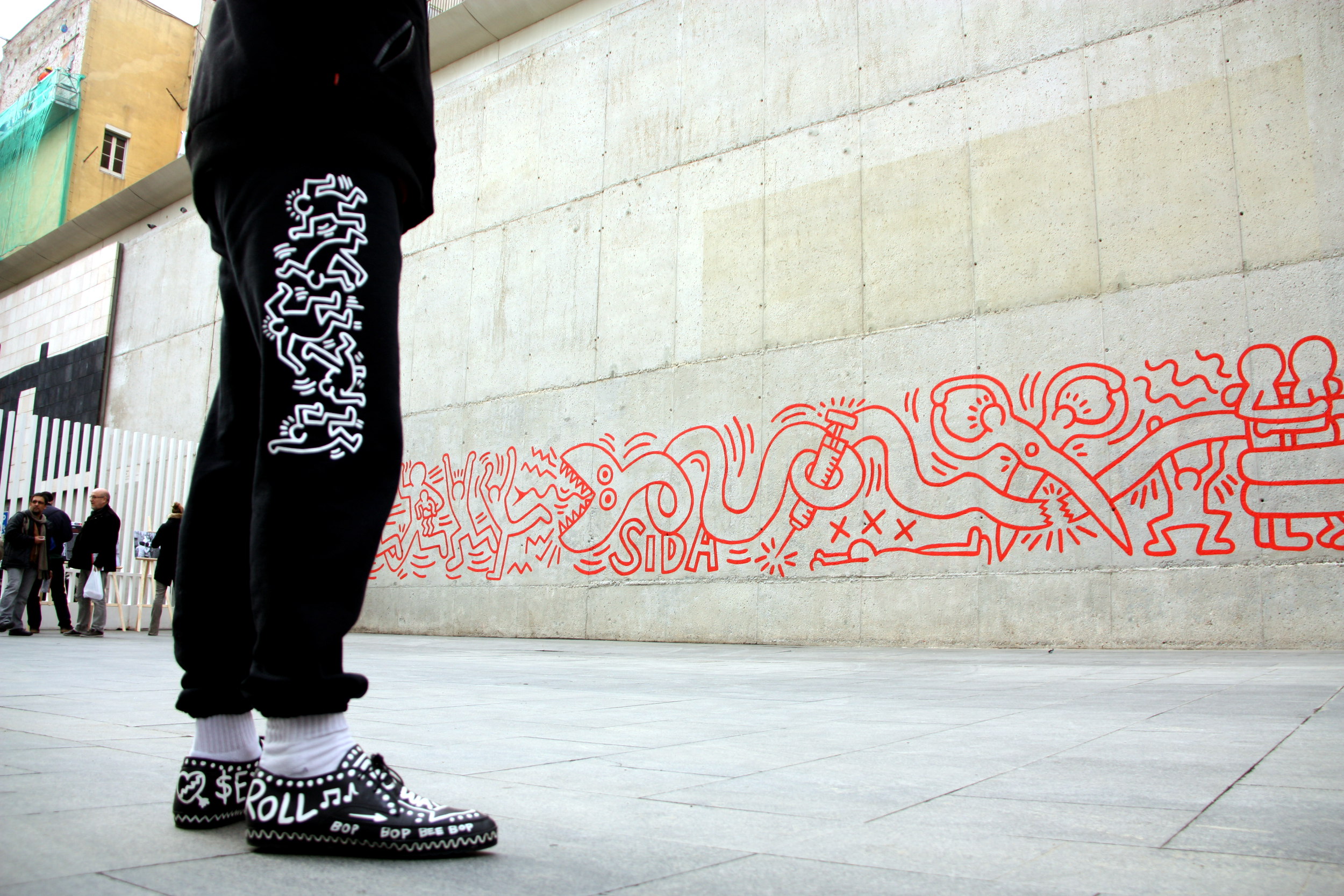Keith Haring mural calling to fight AIDS recreated in its original Barcelona neighbourhood
Urban artist Keith Haring chose the Raval neighbourhood in Barcelona to execute his mural painting Together We Can Stop AIDS in 1989. Diagnosed with HIV a year before, the American artist drew this iconic line in Spanish (Todos juntos podemos parar el SIDA) in blood-red letters and next to some of his characteristic figures, as a call to fight the disease. On Thursday, exactly 25 years later, a reproduction of his famous mural was unveiled in another location of the Raval neighbourhood, sponsored by the Ciutat Vella District (Old City Centre) and by the nearby Museum of Contemporary Art (MACBA). This initiative acknowledges Keith Haring as one of the most emblematic street artists of his time, recalling his stay in Barcelona and highlighting his courage to address a taboo subject that personally affected him.

Pau Cortina
Barcelona (ACN).- Urban artist Keith Haring chose the Raval neighbourhood in Barcelona to execute his mural painting Together We Can Stop AIDS in 1989. Diagnosed with HIV a year before, the American artist drew this iconic line in Spanish (Todos juntos podemos parar el SIDA), in blood-red letters and next to some of his characteristic figures, as a call to fight the disease. On Thursday, exactly 25 years later, a reproduction of his famous mural was unveiled in another location of the Raval neighbourhood, sponsored by the Ciutat Vella District (Old City Centre) and by the nearby Museum of Contemporary Art (MACBA). This initiative acknowledges Keith Haring as one of the most emblematic street artists of his time, recalling his stay in Barcelona and highlighting his courage to address a taboo subject that personally affected him.
When he arrived in Barcelona, Keith Haring was already an acclaimed artist and one of the celebrities of urban art, a revolution of artistic expression revealed in the metro wagons and platforms in New York City. While he was visiting an exhibition on Catalan Painter Frederic Amat in Barcelona, Haring met Montse Guillén, the owner of a restaurant where New York artists used to meet. From that encounter came the suggestion to paint an outside mural related to AIDS.
“Seeing someone who openly and explicitly referred to AIDS was very important”
Only a year before, Haring had been diagnosed as a carrier of the HIV virus. Instead of hiding the disease, the artist addressed it at length in his works. Like many other places at that time, AIDS was a rather delicate issue in Barcelona in 1989. Most people generally avoided talking about it, as explained this Tuesday by the Catalan Minister of Culture, Ferran Mascarell, who also happened to authorise the mural back in 1989, as City Councillor of Barcelona.
Ferran Pujol, a member of the organisation ‘Hispano SIDA’ (Hispanic AIDS) who was close to Haring during his visit to Barcelona, shared a similar opinion. Pujol explained that in those times, people were still so completely shocked at someone for having been diagnosed with HIV that the issue was never addressed. “The people who had been diagnosed were avoided at all cost, and people speculated on who could be infected”. Consequently, “seeing someone who openly and explicitly referred to AIDS was very important”, he declared. So much so that when he learnt the news that Haring had painted the mural, Pujol ran to the Salvador Seguí square to talk with him.
The City Council of Barcelona, both thanks to the ‘Cultural Raval’ Program of the Ciutat Vella District and to the Museum of Contemporary Art, has decided to install a reproduction of the famous mural, whose surface was transferred to a new support, preserving the original paint, and moved to the MACBA in 1992. Coinciding with the 25th execution, the Museum of Contemporary Art has hired a team to recreate the work in a new location near the museum, between Ferlandina Street and Joan Coromines square. anniversary of its